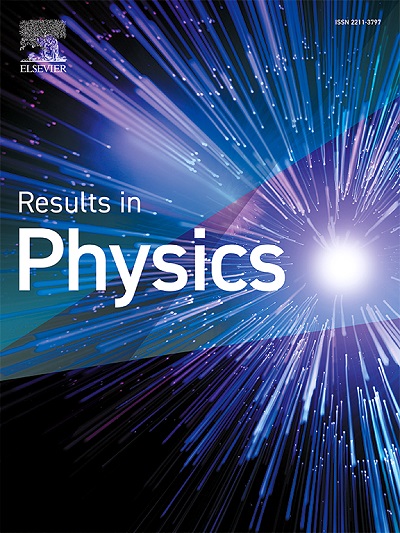非平衡粒子间碰撞中的能量波动和跃迁
IF 4.6
2区 物理与天体物理
Q2 MATERIALS SCIENCE, MULTIDISCIPLINARY
引用次数: 0
摘要
用微观动力学理论研究了布朗粒子在单次碰撞短时间内的能量波动和跃迁,以及随机力。涨落和随机力在非平衡动力学和统计力学中起着重要作用。我们发现随机力的均方与布朗粒子的能量涨落成正比。在硬球碰撞模型的框架下,考虑入射粒子与背景分子的碰撞过程,基于微观动力学理论分析了能量波动和跃迁。以热平衡气体为例的结果表明,能量波动来自两个不同的因素:散射截面位置的随机选择引起的动力学波动,这与粒子的初始能量成正比;热波动与分子的速度分布有关,而分子的速度分布与气体温度成正比。我们证明了两种混合气体在热平衡状态下的能量通量密度等于温差ΔT乘以导热系数κ。因此,在这种特殊情况下,热力学第二定律提供了微观动力学的视角。我们的发现有助于理解非平衡系统中的随机动力学和松弛过程。本文章由计算机程序翻译,如有差异,请以英文原文为准。
Energy fluctuations and transitions in non-equilibrium inter-particle collisions
The energy fluctuations and transitions, as well as the random forces, of a Brownian particle in the short-time limit of one single collision are studied using microscopic kinetic theory. Fluctuations and random forces play fundamental roles in non-equilibrium dynamics and statistical mechanics. We find that the mean-square of random forces is proportional to the energy fluctuation for Brown particles. By considering collision processes between an incident particle and background molecules within the framework of the hard-sphere collision model, we analytically investigate energy fluctuations and transitions based on microscopic kinetic theories. Results for the example of the thermal equilibrium gas show that the energy fluctuations arise from two distinct contributions: kinetic fluctuations resulting from the random selection of scattering cross-section positions, which are proportional to the particle’s initial energy; and thermal fluctuations associated with the velocity distribution of molecules, which are proportional to gas temperature. We demonstrate that the energy flux density is equal to the temperature difference multiplied by the thermal conductivity coefficient in two mixed gases under thermal equilibrium. Therefore, a microscopic kinetic perspective is provided for the second law of thermodynamics in this specific scenario. Our finding helps understand random dynamics and relaxation processes in non-equilibrium systems.
求助全文
通过发布文献求助,成功后即可免费获取论文全文。
去求助
来源期刊

Results in Physics
MATERIALS SCIENCE, MULTIDISCIPLINARYPHYSIC-PHYSICS, MULTIDISCIPLINARY
CiteScore
8.70
自引率
9.40%
发文量
754
审稿时长
50 days
期刊介绍:
Results in Physics is an open access journal offering authors the opportunity to publish in all fundamental and interdisciplinary areas of physics, materials science, and applied physics. Papers of a theoretical, computational, and experimental nature are all welcome. Results in Physics accepts papers that are scientifically sound, technically correct and provide valuable new knowledge to the physics community. Topics such as three-dimensional flow and magnetohydrodynamics are not within the scope of Results in Physics.
Results in Physics welcomes three types of papers:
1. Full research papers
2. Microarticles: very short papers, no longer than two pages. They may consist of a single, but well-described piece of information, such as:
- Data and/or a plot plus a description
- Description of a new method or instrumentation
- Negative results
- Concept or design study
3. Letters to the Editor: Letters discussing a recent article published in Results in Physics are welcome. These are objective, constructive, or educational critiques of papers published in Results in Physics. Accepted letters will be sent to the author of the original paper for a response. Each letter and response is published together. Letters should be received within 8 weeks of the article''s publication. They should not exceed 750 words of text and 10 references.
 求助内容:
求助内容: 应助结果提醒方式:
应助结果提醒方式:


